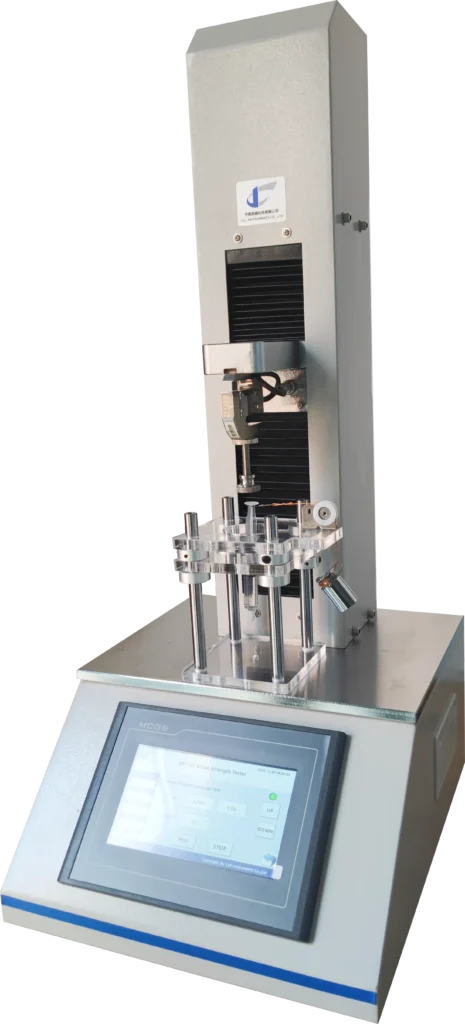Syringe Closure System Liquid Leakage Test
In the pharmaceutical and medical device industries, ensuring the integrity of syringes is crucial for product safety and patient health. One of the most essential procedures is the syringe liquid leakage test, which evaluates the ability of a syringe’s plunger and closure system to prevent liquid leaks under pressure. This article will provide a comprehensive guide on how to conduct the syringe liquid leakage test in compliance with ISO 7886-1 Annex D and ISO 11040-4 Annex G2 standards. As a leading manufacturer of precision testing instruments, Cell Instruments offers reliable solutions for professionals and quality control personnel in syringe testing.
Understanding the Syringe Liquid Leakage Test
The syringe liquid leakage test ensures that syringes remain leak-proof even when subjected to pressure. It assesses the tightness of both the plunger stopper and the closure system (tip caps or needle shields), safeguarding against contamination and dosage inaccuracies.
Syringe Liquid Leakage Test According to ISO 7886-1 Annex D
ISO 7886-1 Annex D outlines a precise method to evaluate the sealing performance of the syringe plunger stopper.
The syringe is filled with distilled water, sealed at the nozzle, and subjected to both axial and radial forces. The aim is to simulate stresses that might cause liquid leakage past the plunger stopper.
- Sealing Device: To fully seal or occlude the syringe nozzle.
- Force Application Device: To apply a sideways force of 0.25 N to 3 N to the plunger.
- Pressure Device: Capable of generating pressures of 200 kPa and 300 kPa.
- Distilled Water: Maintained between 18 °C to 28 °C.
- Fill the syringe with distilled water above its nominal capacity.
- Expel air and adjust water volume to nominal capacity.
- Seal the syringe nozzle.
- Apply a sideways force to the plunger to achieve maximum radial deflection.
- Generate the required pressure and maintain for 30-35 seconds.
- Inspect the syringe for any liquid leakage past the plunger stopper.
This test simulates handling stresses to verify that the syringe plunger maintains a secure seal under pressure.
Syringe Closure Leak Test: ISO 11040-4 Annex G2
The ISO 11040-4 Annex G2 syringe closure leak test focuses on assessing the performance of syringe closure systems, including tip caps and needle shields.
The goal is to verify that the syringe closure system can withstand potential overpressure during filling or transportation, preventing leakage.
- Fill the syringe to 1/3 to 2/3 of the nominal volume.
- Insert the syringe into the test holder and secure it.
- Apply 110 kPa of pressure for 5 seconds.
- Monitor the syringe for any visible leakage during and after the test.
- Release the pressure and assess the system: the test passes if the tip caps or needle shields remain in place and no droplets form externally.
The internal pressure force (F) can be calculated with:
F = p × π/4 × d² × 10⁻³
where:
- p = 110 kPa
- d = nominal inner diameter of the syringe barrel (mm)
This ensures an accurate and consistent application of pressure to the syringe during the test.
Benefits of Using Cell Instruments’ Testing Solutions
Cell Instruments offers advanced and customizable syringe liquid leakage test equipment tailored to meet ISO standards. Our testing solutions:
- Deliver accurate and reproducible results.
- Accommodate various syringe sizes and types.
- Integrate seamlessly with existing quality control workflows.
Custom testing solutions and automation transformation services ensure adaptability for specific testing requirements.

Why Choose Syringetest.com?
The syringe liquid leakage test is essential for validating the integrity of syringes in pharmaceutical applications. Following the guidelines set by ISO 7886-1 Annex D and ISO 11040-4 Annex G2 ensures compliance, product reliability, and patient safety. Trust Cell Instruments for expert testing solutions and customized support to enhance your syringe quality control processes.
